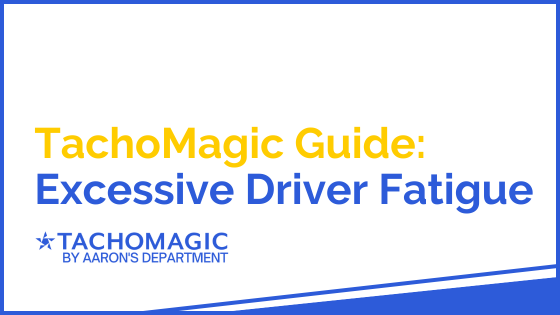Introduction - Excessive Driver Fatigue
For professional drivers in the UK, excessive driver fatigue is unusual but not unheard of. Normal driver fatigue can diminish reaction times, impair judgment, and can cloud concentration, transforming a vehicle into a potential weapon. Excessive driver fatigue is even more hazardous. It's important that if you think you are suffering from excessive driver fatigue, you get to the bottom of what is causing it, see your doctor, and take steps to alleviate it.
The Alarming Reality of Excessive Driver Fatigue in the UK
Driver fatigue is no small issue in the UK. According to the government, sleepiness contributes to up to 20% of motorway accidents, with potentially devastating consequences. It's not just about nodding off at the wheel; even subtle reductions in alertness can have disastrous effects.
Causes of driver fatigue:
- Insufficient sleep: The golden standard for most adults is 7–8 hours of sleep per night. However, with demanding schedules and irregular working hours, truck drivers, taxi drivers, and other professional drivers in the UK often fall short.
- Circadian rhythm disruption: Night shifts and long journeys can throw our internal clock out of whack, making it harder to feel truly rested, even after sufficient sleep.
- Medical conditions: Certain medical conditions, like sleep apnoea, are highly prevalent in the UK and can significantly impact sleep quality and lead to excessive daytime sleepiness.
- Monotonous driving: Long stretches of motorway can lull even the most vigilant driver into a hypnotic state, where focus wanes and awareness dwindles.

Excessive Driver Fatigue
The Government recently released a campaign for drivers regarding excessive sleepiness and driving.
This also includes information on symptoms that are beyond usual driver fatigue that you would need to inform the DVLA about.
You must tell the DVLA if you have:
- confirmed moderate or severe obstructive sleep apnoea syndrome (OSAS), with excessive sleepiness
- either narcolepsy or cataplexy, or both
- any other sleep condition that has caused excessive sleepiness for at least 3 months - including suspected or confirmed mild OSAS.
Be aware, You can be fined up to £1,000 if you do not tell the DVLA about a medical condition that affects your driving. You may be prosecuted if you’re involved in an accident as a result.
For further information on sleepiness and tiredness, the Government has released a pamphlet (INF159 Sleepiness & Tiredness) which you may find useful.
Sleep Apnoea and Excessive Driving Fatigue
- Sleep apnoea is the most common sleep
related medical disorder.
- Sleep apnoea significantly increases the risk
of traffic accidents.
- Sleep apnoea occurs most commonly, but
not exclusively, in overweight individuals.
- Partners often complain about snoring
and notice that the sufferers have breathing
pauses during sleep.
- Sleep apnoea sufferers rarely wake from sleep
feeling fully refreshed and tend to fall asleep easily
when relaxing.
- Long-distance lorry and bus drivers affected by
sleep apnoea are of great concern as most will
be driving on monotonous roads/motorways
and the size or nature of the vehicle gives little
room for error.
- Estimates suggest at least four in every 100 men
have sleep apnoea. Sleep problems arise more
commonly in older people.
- Lifestyle changes such as weight loss or cutting
back on alcohol, will help ease the symptoms of
sleep apnoea.

The Driver's Arsenal: Recognising and Combatting Excessive Driver Fatigue
The good news is, driver fatigue isn't an inevitable foe. By recognising its warning signs and implementing countermeasures, professional drivers in the UK can stay sharp and navigate the roads safely.
Early Warning System:
- Drowsy eyelids: Frequent blinking, difficulty keeping your eyes open, or blurred vision are all red flags.
- Yawning: Excessive yawning is a classic indicator of sleepiness.
- Daydreaming: Finding your mind wandering to faraway places while driving is a sign your focus is flagging.
- Drifting lanes: Unintentionally veering out of your lane is a sure sign of impaired alertness.
- Physical discomfort: Stiffness, neck pain, and burning eyes can be signs of fatigue-induced tension.
Defensive Manoeuvres:
- Pull over and rest: This is the golden rule. If you feel drowsy, don't push your luck. Find a safe spot to pull over and take a 20-30 minute power nap. Thankfully, the UK has a network of motorway service stations that are perfect for this.
- Hydration is key: Dehydration can exacerbate fatigue. Keep a reusable water bottle handy and sip regularly throughout your journey.
- Move your body: Get out of the cab and stretch your legs! Do some jumping jacks, walk briskly for a few minutes, or engage in any light activity to get your blood flowing.
- Caffeine can be a temporary boost: A cup of tea or coffee can provide a temporary jolt of alertness, but remember, it's not a substitute for proper sleep.
- Adjust the environment: Open a window for fresh air, play some upbeat music, or change the temperature in the cab. A stimulating environment can help keep you engaged.
Beyond the Driver: Tackling Excessive Driver Fatigue
Combatting excessive driver fatigue requires a multipronged approach. Individual drivers play a crucial role, but so do fleet managers, policymakers, and the broader transportation industry.
- Flexible scheduling: Whenever possible, schedules should allow for adequate rest periods and avoid long stretches of monotonous motorway driving.
- Regular health checks: Encouraging drivers to undergo regular sleep apnoea screenings and addressing any underlying medical conditions can significantly improve alertness.
- Technology to the rescue: Advanced driver assistance systems (ADAS) are becoming increasingly common in UK vehicles and can warn of lane departures, monitor alertness levels, and even take corrective action in critical situations.
- Raising awareness: Public awareness campaigns can educate all road users about the dangers of driver fatigue and encourage responsible driving practices. Remember, the THINK! Campaign, run by the UK government, is a great example of this.
Conclusion - Excessive Driver Fatigue
Excessive driver fatigue poses a significant threat on UK roads, jeopardising both professional drivers and other road users. While normal fatigue can impair judgment and reaction times, excessive fatigue carries the chilling potential to transform a vehicle into a lethal weapon. Addressing this issue demands a multi-faceted approach.
Drivers must be their own first line of defence. Recognising the early warning signs like drowsiness, drifting lanes, or excessive yawning is crucial. Pulling over for a nap, staying hydrated, engaging in light physical activity, and adjusting the driving environment can provide temporary relief.
Fleet managers must prioritise schedules that allow for adequate rest and minimise monotonous driving stretches. Encouraging regular health checks, particularly for sleep apnoea, can proactively address underlying medical issues contributing to fatigue. Integrating advanced driver assistance systems can offer additional layers of safety by alerting drivers to drowsiness and potentially even correcting lane departures.
Further Reading
If you have found our article on excessive driver fatigue useful, we have further articles below that you may also find helpful.
Dart Charge - Using The Dartford Crossing

